(A generous Bonham resident recently gave some photos of the current Sowell’s Bluff bridge, over Red River on HWY 78, to the Fannin County Historical Museum [FCHM]. They were taken during its construction phase from 1937 to 1938 and are featured here along with a history of the bridge. The current bridge was built a few years after a one-lane suspension bridge at Sowell’s Bluff collapsed into Red River on January 29, 1934.)
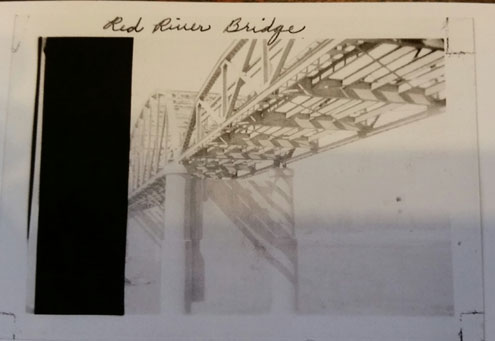
The Bonham Daily Favorite of March 9, 1935 carried a big front-page headline noting that Fannin County Judge S. F. Leslie had received a letter from the Texas Highway Commission (THC) announcing that it and the Oklahoma Highway Commission had agreed to share the costs of a new bridge at Sowell's Bluff.
By August Judge Leslie received another letter from the THC noting that the plans for the new bridge were being drawn up. Moreover, the letter noted that federal dollars would be spent on the project by the United States Bureau of Public Roads.
The following summer the call went out for bids from contractors. The Bonham Daily Favorite of June 19, 1936 noted that the estimated cost of the new bridge was $350,000, and that $175,000 of that was being provided by the federal government. It further reported that Cong. Sam Rayburn had "no doubt that the plans for the bridge would receive immediate approval by the Federal Department of Good Roads."
Come fall the plans for the new bridge had been approved by the U. S. Bureau of Public Roads. The Daily Favorite of October 16 reported that the "length of the bridge will be 2,108.17 feet or a little over one-third of a mile." It also noted that the structure "will be concrete and steel."
The article further stated that "the structure would be approximately where the old bridge stood," but that "the north end in Bryan County will swing a considerable distance west of where the old structure connected with the north side of the river."
By late December it was reported that the bidding war had been won by the Kansas City Bridge Company, and that they might put their main offices in Bonham.
The January 19, 1937 Bonham Daily Favorite reported that S. McGlasson of the Texas and Pacific Railway Co., "advises the Favorite that a big shipment of the steel for Red River bridge has been ordered to be shipped from the east to Bonham to be used in the construction of the bridge."
Additionally, the T & P was "expecting some cranes and other machinery . . . which is to be used in handling the heavy material for the bridge."
By early 1937 it appeared that work on the new bridge would start soon. The Daily Favorite of January 25 reported that the Kansas City Bridge Company would have offices in Bonham. The January 29 issue noted that the "first carload of steel for the bridge has arrived in Bonham and is being unloaded today," and that "several additional carloads of steel were enroute to Bonham."
The article also hinted that the project might be at least a minor boost for local businesses when it noted that "2,500,000 pounds of cement" had been ordered from Bonham's own Higginbotham-Steger Lumber Company, located at 120 South Main Street. Moreover, men to work on the bridge had begun arriving in Bonham with an estimated "ten or more families" to move in later.
Another local boost came when it was announced that two local truck drivers, John R. Jaynes and Alonzo "Pood" Chaffin, had been contracted to move all materials and heavy equipment, including a huge concrete mixer, from the T & P rail yards to the Sowell's Bluff work site. The Daily Favorite of February 8 reported that "Jaynes and Chaffin have several trucks and are well prepared to do the work."
Before work on the new bridge could start, debris from the old one had to be cleared out. Most formidable of all were the concrete piers. It was decided in the planning stage that they could not be utilized in the new bridge, and so they were dynamited.
Once work did start, there were the predictable delays due to such things as material shortages, bad weather and, as you might expect, occasional flooding of the river.
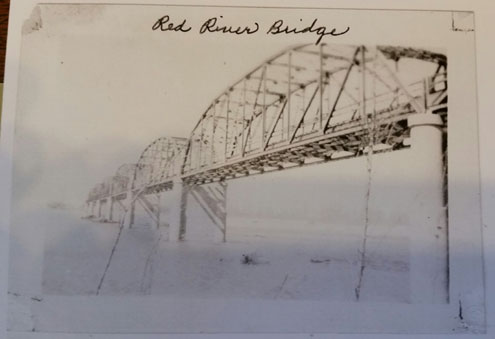
By early 1938 it became apparent that the Texas approach to the bridge would have to be built up, thus requiring more money. The Dallas News of February 13 stated that the "State Highway Department has announced it has funds available with which to build the approach to the bridge over Red River at Sowell's Bluff," further noting that the "road will have to be built several feet higher in order to bring it to the bridge level which is higher than that of the bridge that fell in the river."
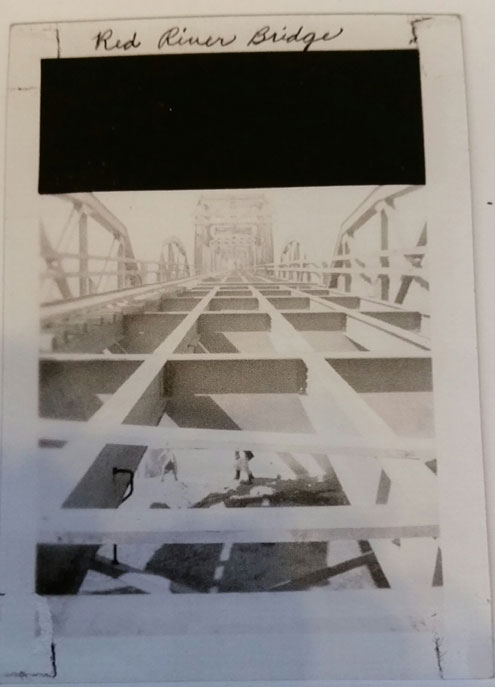
By April the structure had really taken form, and local folks were beginning to see what the finished product would look like. Photographs of it even appeared in the April 3 Dallas Morning News. The finishing work, however, went slow, no doubt too slow for those anxious to cross it for the first time.
By late summer and early fall, local folks were perhaps convinced that an opening date for the new bridge would never arrive. The Daily Favorite of August 17 reported that the bridge would be finished in early October. By early October it announced that the bridge should be ready for travel in early November.
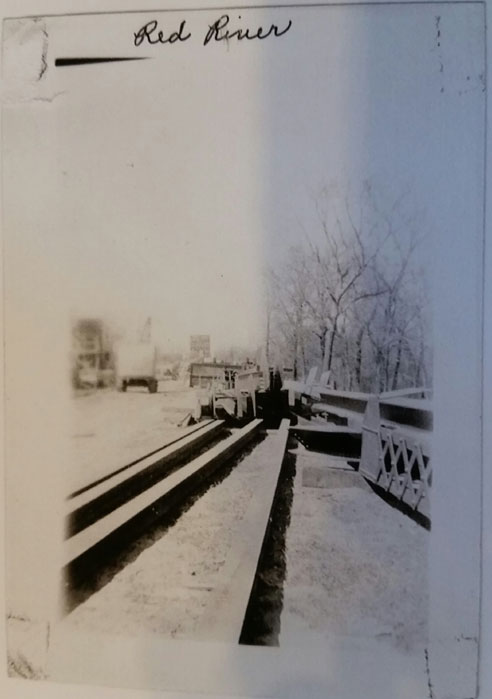
By late November the Daily Favorite was telling that it would be open by early December. The November 23 issue also noted that Highway 78 from Bonham to the new bridge would more than likely be paved during the highway department's 1939-40 schedule.
Finally, the big day came. The Red River Bridge at Sowell's Bluff was opened to traffic on Saturday, December 10, 1938. Once again motorists in Fannin and Bryan counties enjoyed using two bridges, one free and one toll (the Telephone suspension bridge), to reach their destinations.
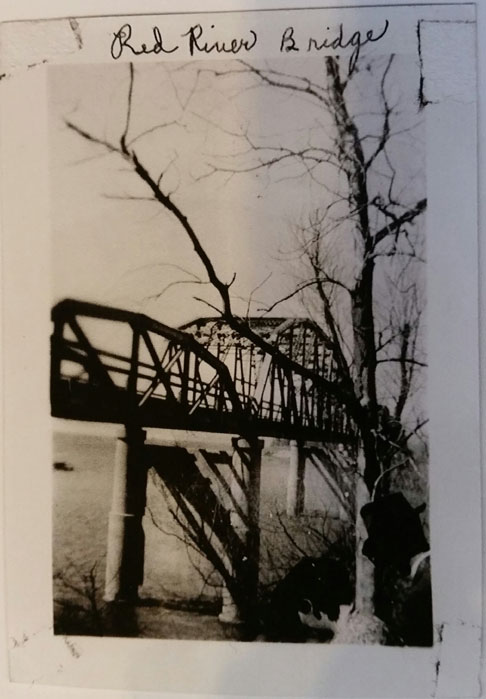
While the new bridge was opened for traffic in December, getting all officials together for a proper opening would take some time. Finally, on March 15, 1939 the bridge was opened with a formal ceremony. The Bonham High School band provided music, and elected officials from both states spoke to an estimated crowd of 1,000 people. Lunch was served later at the schoolhouse in Yuba.
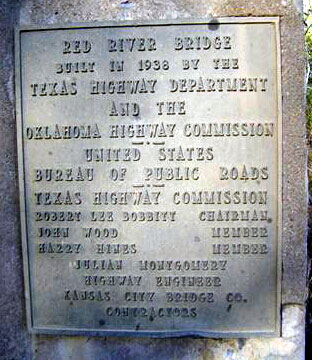
Many thanks to Mr. David Trout for giving the construction-phase photos to the FCHM. Anyone else with similar photos is welcome to contact the museum, or can contact me at (903)227-1772.
Tim Davis teaches at Bonham High School.